External links
- Brunilde S. Ridgway, Dictionary of Art Historians
Brunilde Sismondo Ridgway (born 1929, Chieti) is an Italian archaeologist and specialist in ancient Greek sculpture.
The daughter of Giuseppe Sismondo, a career army officer, and Maria (Lombardo) Sismondo, young Brunilde lived in Sicily and then in Ethiopia and Eritrea, where her father had been stationed during World War II. When her father was captured by the British in World War II and sent to a prisoner-of-war camp in Kenya, she secured a job as a telephone operator at police headquarters in Asmara (Eritrea) where she learned to speak English.
After World War II, she studied classics at the University of Messina, where she obtained her degree in classics in 1953. An archaeology scholarship and Fulbright Travel Grant allowed her to continue her studies at Bryn Mawr College in Pennsylvania, where she came under the tutelage of Rhys Carpenter. At the end of her MA, she wrote her thesis on Archaic sculpture at the American School of Classical Studies at Athens. She received her Ph.D. in 1958 and returned as a teacher to Bryn Mawr, where she spent most of her career.
In 1977, she was named Rhys Carpenter Professor of Classical and Near Eastern Archaeology, a post she held until her retirement in 1994. In 1988, she won the Gold Medal of the Archaeological Institute of America. [1] She was elected to the American Philosophical Society in 1993. [2] She married physical therapist Henry W. Ridgway in 1958.[ citation needed ]
Brunilde Ridgway is, in keeping with her mentor Rhys Carpenter, a follower of the radical questioning of the Meisterforschung, or search for the masterpiece or archetype that inspired a replica series, that dominated the history of Greek art since Adolf Furtwängler. Elaborating on Carpenter's remark that Greek sculpture is “the anonymous product of an impersonal craft,” [3] She maintains that the notion of the artistic personality didn't emerge in the West before the 15th century AD. She also addresses the Kopienforschung ("copy research") of Johann Joachim Winckelmann, who is finding a type statuary through its Roman copies, focusing on identifying the originality of Roman sculptors. Rather skeptical vis-à-vis the literary sources, she sticks to the stylistic analysis of the works.
Known for the safety of her erudition and for the stimulating quality of its analyses, [4] it has been criticized, like Carpenter, for what was described as a "devastating" [5] or "systematic scepticism”, [6] or revisionism. [7]
Her main works and writings are:

Praxiteles of Athens, the son of Cephisodotus the Elder, was the most renowned of the Attica sculptors of the 4th century BC. He was the first to sculpt the nude female form in a life-size statue. While no indubitably attributable sculpture by Praxiteles is extant, numerous copies of his works have survived; several authors, including Pliny the Elder, wrote of his works; and coins engraved with silhouettes of his various famous statuary types from the period still exist.
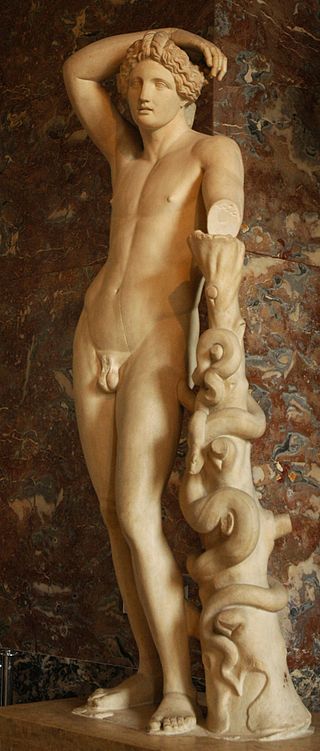
The Apollo Lyceus type, also known as Lycean Apollo, originating with Praxiteles and known from many full-size statue and figurine copies as well as from 1st century BCE Athenian coinage, is a statue type of Apollo showing the god resting on a support, his right forearm touching the top of his head and his hair fixed in braids on the top of a head in a haircut typical of childhood. It is called "Lycean" not after Lycia itself, but after its identification with a lost work described, though not attributed to a sculptor, by Lucian as being on show in the Lyceum, one of the gymnasia of Athens. According to Lucian, the god leaning on a support with his bow in his left hand and his right resting on his head is shown "as if resting after long effort." Its main exemplar is the Apollino in Florence or Apollo Medici, in the Uffizi, Florence.

Paeonius of Mende, Chalkidiki was a Greek sculptor of the late 5th century BC. He most likely received his early training in Northern Greece and is thought to have later adapted Athenian stylistic elements into his own work, based upon his probable interaction with the Olympia workshop of Phidias. In any case, he was "attic-trained."

Dorothy Burr Thompson was an American classical archaeologist and art historian at Bryn Mawr College and a leading authority on Hellenistic terracotta figurines.
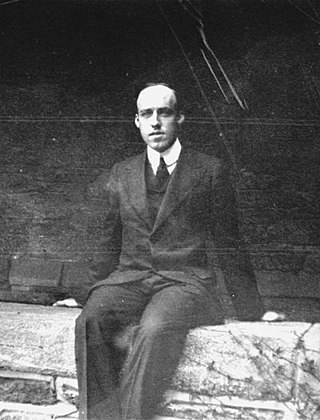
Rhys Carpenter was an American classical art historian and professor at Bryn Mawr College.

The bronze Seated Hermes, found at the Villa of the Papyri in Herculaneum in 1758, is at the National Archaeological Museum of Naples. "This statue was probably the most celebrated work of art discovered at Herculaneum and Pompeii in the eighteenth century", Francis Haskell and Nicholas Penny have observed, once four large engravings reproducing it had appeared in Le Antichità di Ercolano, 1771. To protect it from Napoleonic depredations, it was packed into one of the fifty-two cases of antiquities and works of art that accompanied the Bourbon flight to Palermo in 1798. It was once again in the royal villa at Portici in 1816.

The Venus of Arles is a 1.94-metre-high (6.4 ft) sculpture of Venus at the Musée du Louvre. It is in Hymettus marble and dates to the end of the 1st century BC.
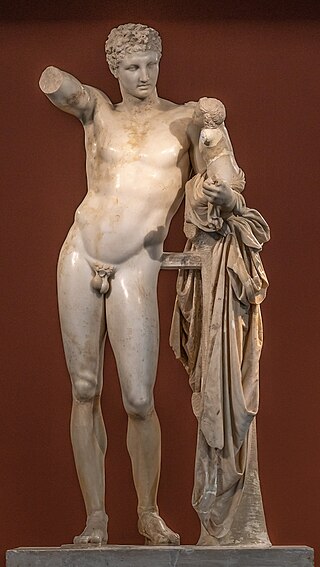
Hermes and the Infant Dionysus, also known as the Hermes of Praxiteles or the Hermes of Olympia is an ancient Greek sculpture of Hermes and the infant Dionysus discovered in 1877 in the ruins of the Temple of Hera, Olympia, in Greece. It is displayed at the Archaeological Museum of Olympia.

The Meleager of Skopas is a lost bronze sculpture of the Greek hero Meleager – host of the Calydonian boar hunt – that is associated in modern times with the fourth century BC architect and sculptor Skopas of Paros.
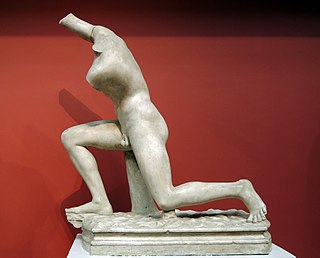
The Subiaco Ephebe is a sculpture of a young man approaching puberty found on the site of the Neronian Villa Sublaquensis at Subiaco in the upper Aniene valley, Lazio, Italy. The headless marble is a copy of a lost Greek bronze, as evidenced by an awkward tree-trunk support and "the failure of the total silhouette to keep manageably within the boundaries of a single block of stone", as Rhys Carpenter observes; it is unlikely to postdate Nero because of its find location. The date of the bronze original that it reflects is contested. When it was first found August Kalkmann gave it a date early in the fifth century BCE. but general opinion before World War II made it a work of the end of the fourth century in the turn towards Hellenistic style, to which Rhys Carpenter objected, suggesting instead that it belonged in the 60s or 70s of the fifth century. Brunilde Sismondo Ridgway, in a radical redating of the history of Greek sculpture, has placed it among classicising works of the first century BCE.

The Sleeping Ariadne, housed in the Vatican Museums in Vatican City, is a Roman Hadrianic copy of a Hellenistic sculpture of the Pergamene school of the 2nd century BC, and is one of the most renowned sculptures of Antiquity. The reclining figure in a chiton bound under her breasts half lies, half sits, her extended legs crossed at the calves, her head pillowed on her left arm, her right thrown over her head. Other Roman copies of this model exist: one, the "Wilton House Ariadne", is substantially unrestored, while another, the "Medici Ariadne" found in Rome, has been "seriously reworked in modern times", according to Brunilde Sismondo Ridgway. Two surviving statuettes attest to a Roman trade in reductions of this familiar figure. A variant Sleeping Ariadne is in the Prado Museum, Madrid. A later Roman variant found in the Villa Borghese gardens, Rome, is at the Louvre Museum.

Velificatio is a stylistic device used in ancient Roman art to frame a deity by means of a billowing garment. It represents "vigorous movement," an epiphany, or "the vault of heaven," often appearing with celestial, weather, or sea deities. It is characteristic of the iconography of the Aurae, the Breezes personified, and one of the elements which distinguish representations of Luna, the Roman goddess of the Moon, alluding to her astral course.

The modius is a type of flat-topped cylindrical headdress or crown found in ancient Egyptian art and art of the Greco-Roman world. The name was given by modern scholars based on its resemblance to the jar used as a Roman unit of dry measure, but it probably does represent a grain-measure, and symbolizing one's ability to learn new information by having an open mind with an empty cup. Serapis was the main idol/figurehead at the Library of Alexandria during the ancient Egyptian & Roman alliance.

The Diana of Gabii is a statue of a woman in drapery which probably represents the goddess Artemis and is traditionally attributed to the sculptor Praxiteles. It became part of the Borghese collection and is now conserved in the Louvre with the inventory number Ma 529.

The Dancers of Delphi, also known as the Acanthus Column, are three figures in high relief on top of an acanthus column found near the sanctuary of Pythian Apollo at Delphi. They are on display in the Delphi Archaeological Museum and were the inspiration for the first of Claude Debussy's Préludes.
The Peplos Kore is an ancient sculpture from the Acropolis of Athens. It is considered one of the best-known examples of Archaic Greek art. Kore is a type of archaic Greek statue that portrays a young woman with a stiff posture looking straight forward. Although this statue is one of the most famous examples of a kore, it is actually not considered a typical one. The statue is not completely straight, her face is leaned slightly to the side, and she is standing with her weight shifted to one leg. The other part of the statue's name, peplos, is based on the popular archaic Greek gown for women. When the statue was found it was initially thought that she was wearing a peplos, although it is now known that she is not.

The Themis of Rhamnous is a statue found in 1890 in Rhamnous, identified as the goddess Themis and dated to around 300 BCE on the basis of a dedicatory inscription on its base. It is displayed in the National Archaeological Museum of Athens.
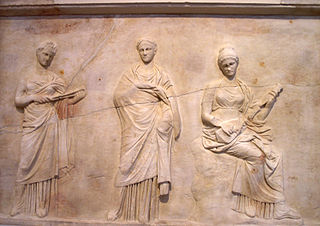
The Mantineia Base is an ensemble of three ancient Greek bas relief plaques, one of which depicts Apollo, Marsyas, and a slave, and the other two of which each show a group of three Muses. They were discovered in 1887 on the site of the ancient Gree city of Mantineia in Arcadia and were probably decoration for a statue base. They have been attributed to the sculptor Praxiteles or another member of his workshop. They are currently kept in the National Archaeological Museum of Athens, where their inventory numbers are NAMA 215–217.
Clairève or Claireve Grandjouan was a French-born American archaeologist.

Hellenistic sculpture represents one of the most important expressions of Hellenistic culture, and the final stage in the evolution of Ancient Greek sculpture. The definition of its chronological duration, as well as its characteristics and meaning, have been the subject of much discussion among art historians, and it seems that a consensus is far from being reached. The Hellenistic period is usually considered to comprise the interval between the death of Alexander the Great in 323 BC, and the conquest of Egypt by the Romans in 30 BC. Its generic characteristics are defined by eclecticism, secularism, and historicism, building on the heritage of classical Greek sculpture and assimilating Eastern influences.